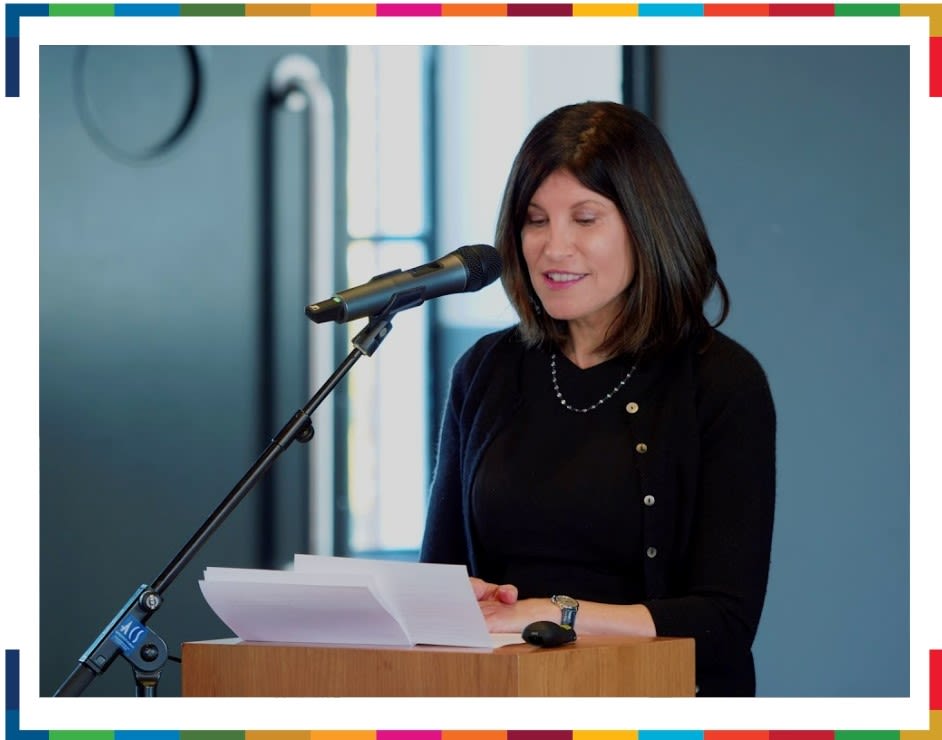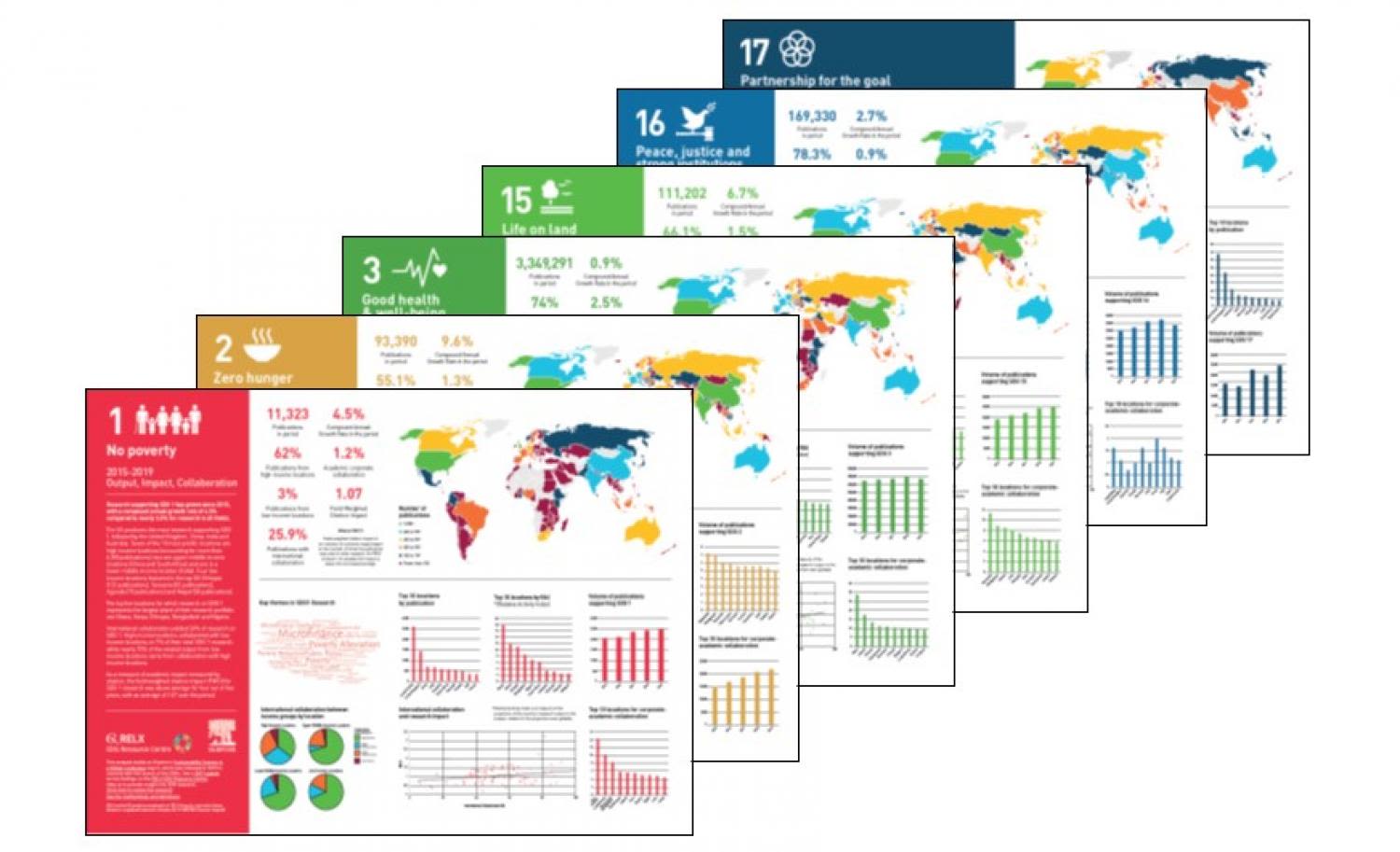From research
to action

How the RELX SDG Resource Centre is advancing the UN's Sustainable Development Goals

Jake King is an unconventional corporate employee. After a degree in zoology, he moved to the Honduran island of Roatán where he worked as a scuba instructor and occasional marine conservationist.
Each morning King watched the sun come up from the deck of his wooden cabin on the beach before kayaking to work. “I fell in love with the island,” he says. “I was in awe of the beauty of the underwater world there.” Roatán rests on the 700-mile Mesoamerican Reef – the second-largest barrier reef in the world and home to over 65 dazzling species of coral, 350 species of mollusc and more than 500 species of fish.
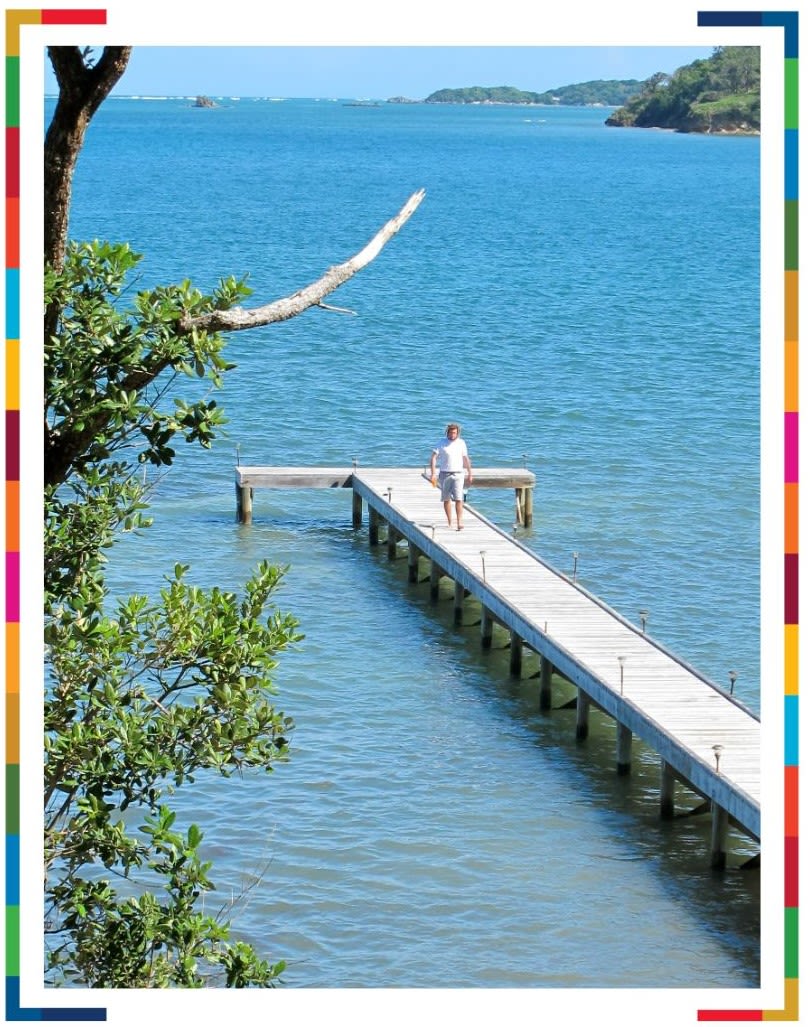
Jake King in Roatán, Honduras
King saw turtles, sharks, and rays as well as snapper, grouper, tuna, and barracuda but he also saw damage to the reef caused by cruise ships, untreated waste, agricultural runoff, overfishing and climate change. On land, he saw poverty, hunger, crime, and unrest including a military coup in which Honduran soldiers abducted the country’s president in his pyjamas and exiled him to Costa Rica. “We had to be careful what time of day we travelled on the mainland and the routes we took because of violent crime,” says King. “During the coup, it seemed the whole country might go up in flames.”
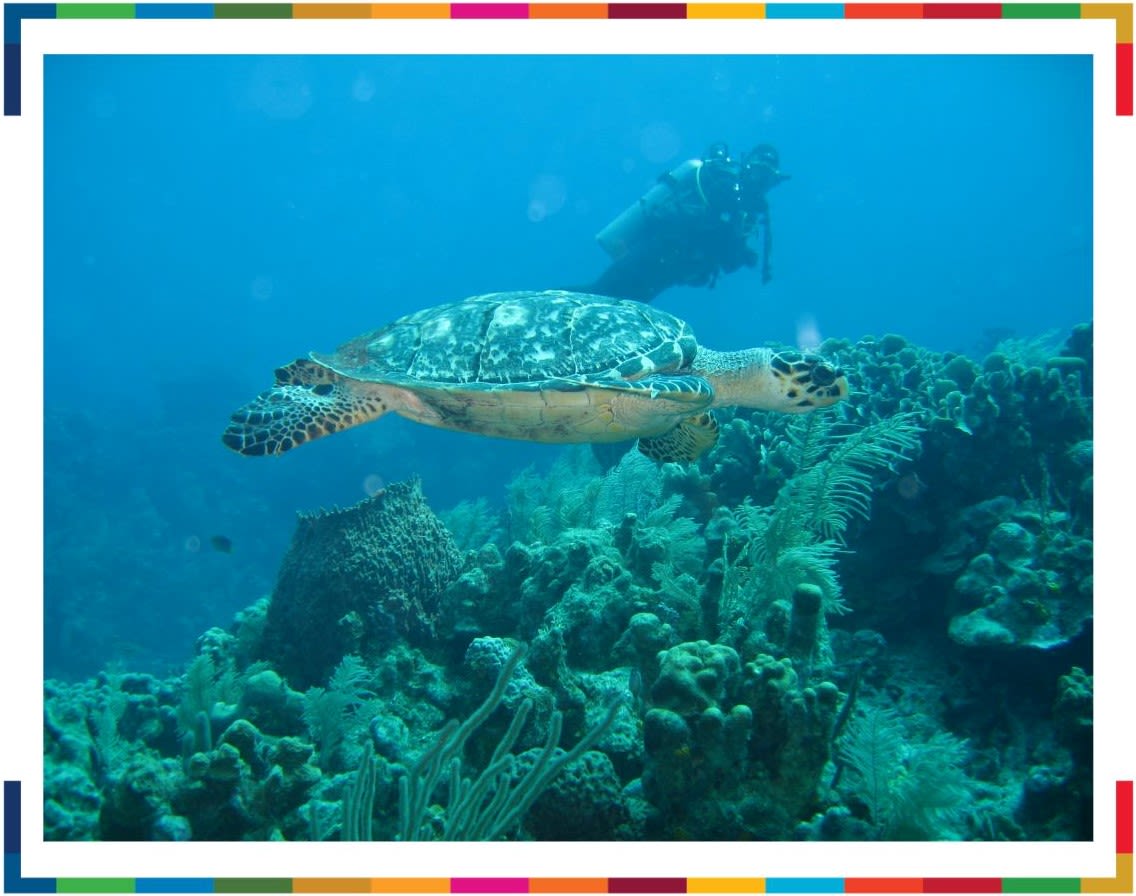
Roatán's Mesoamerican Reef – the second-largest barrier reef in the world
For King, Honduras was a microcosm of the environmental and social challenges the world was facing. “I did a lot of soul-searching there about whether to live a low-key sustainable life or seek a job where I could make a wider contribution,” he says. In the end, he did both swapping board shorts for board rooms when he applied for a corporate responsibility role at RELX and now – 12 years later – working remotely from rural Vermont where he lives a sustainable lifestyle with his wife, son, and chickens.

Jake King in Roatán, Honduras
Jake King in Roatán, Honduras

Roatán's Mesoamerican Reef – the second-largest barrier reef in the world
Roatán's Mesoamerican Reef – the second-largest barrier reef in the world
birth of the RELX sdg resource centre

King manages RELX’s SDG Resource Centre, a digital platform containing information about the UN’s 17 Sustainable Development Goals (SDGs). The UN introduced the 17 SDGs in 2015 as a universal call to action to end poverty, protect the planet and reduce inequality. The aim is to achieve them by 2030. RELX uses the SDGs as a framework for corporate responsibility viewing its commitment to the goals as an integral part of how it operates rather than a bolt-on activity. The company believes its four businesses inherently advance the SDGs. For instance, LexisNexis Legal & Professional contributes to SDG 16 (Peace, Justice, and Strong Institutions) with its rule of law work and Elsevier contributes to SDG 4 (Good Health and Well-Being) with its medical and scientific journals.
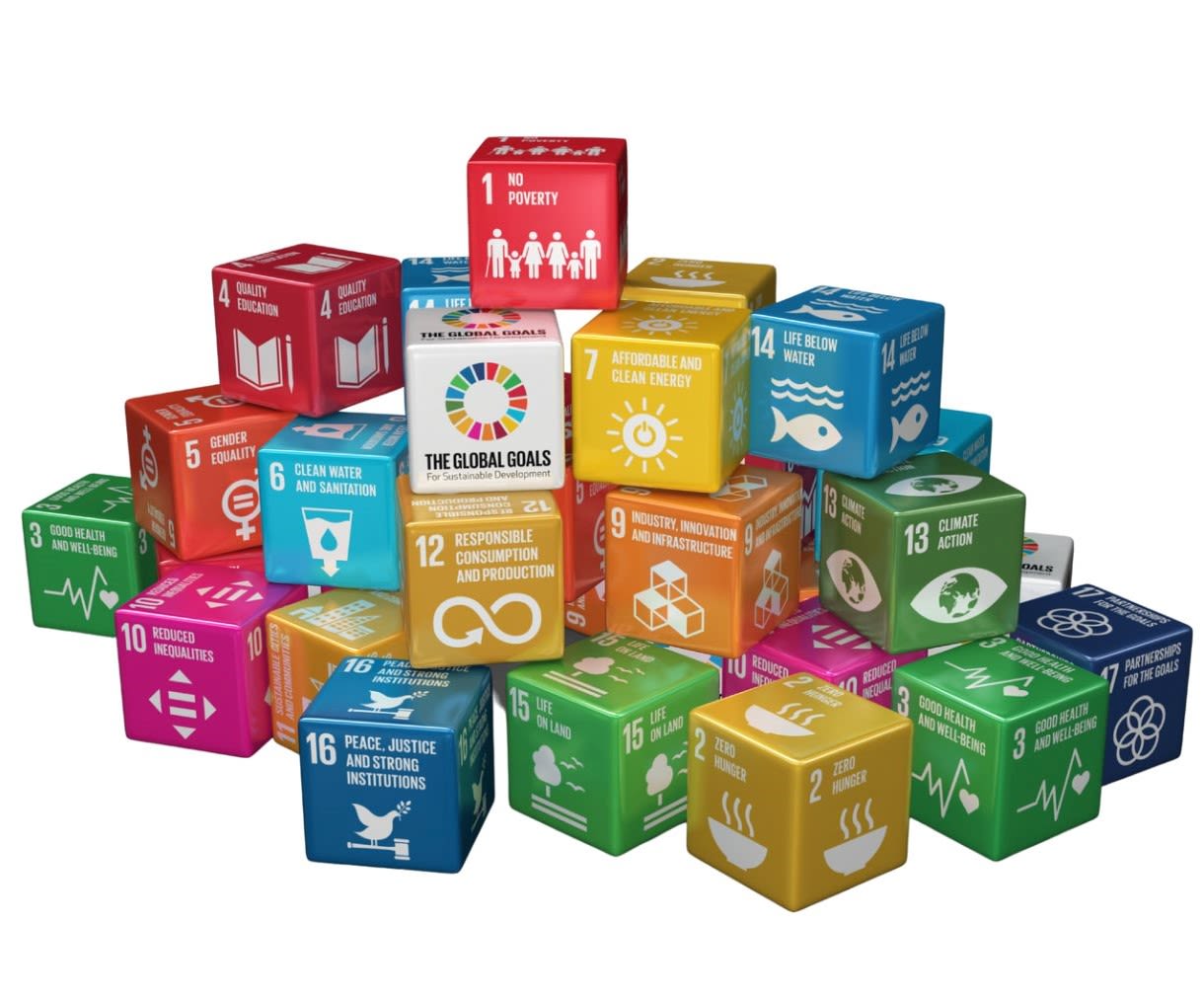
This integrated approach is recognised by the ratings agencies that rank companies on their environmental, social and governance (ESG) performance. Sustainalytics ranks RELX first in its sector for ESG performance and the company has maintained an AAA ESG rating from MSCI for the seventh consecutive year and is fifth in the Responsibility 100 Index of FTSE 100 companies measured against the SDGs. “To us, corporate responsibility is not a programme or a prescriptive set of activities,” says Dr Márcia Balisciano, global head of corporate responsibility at RELX. “It is how we do what we do on a daily basis.”
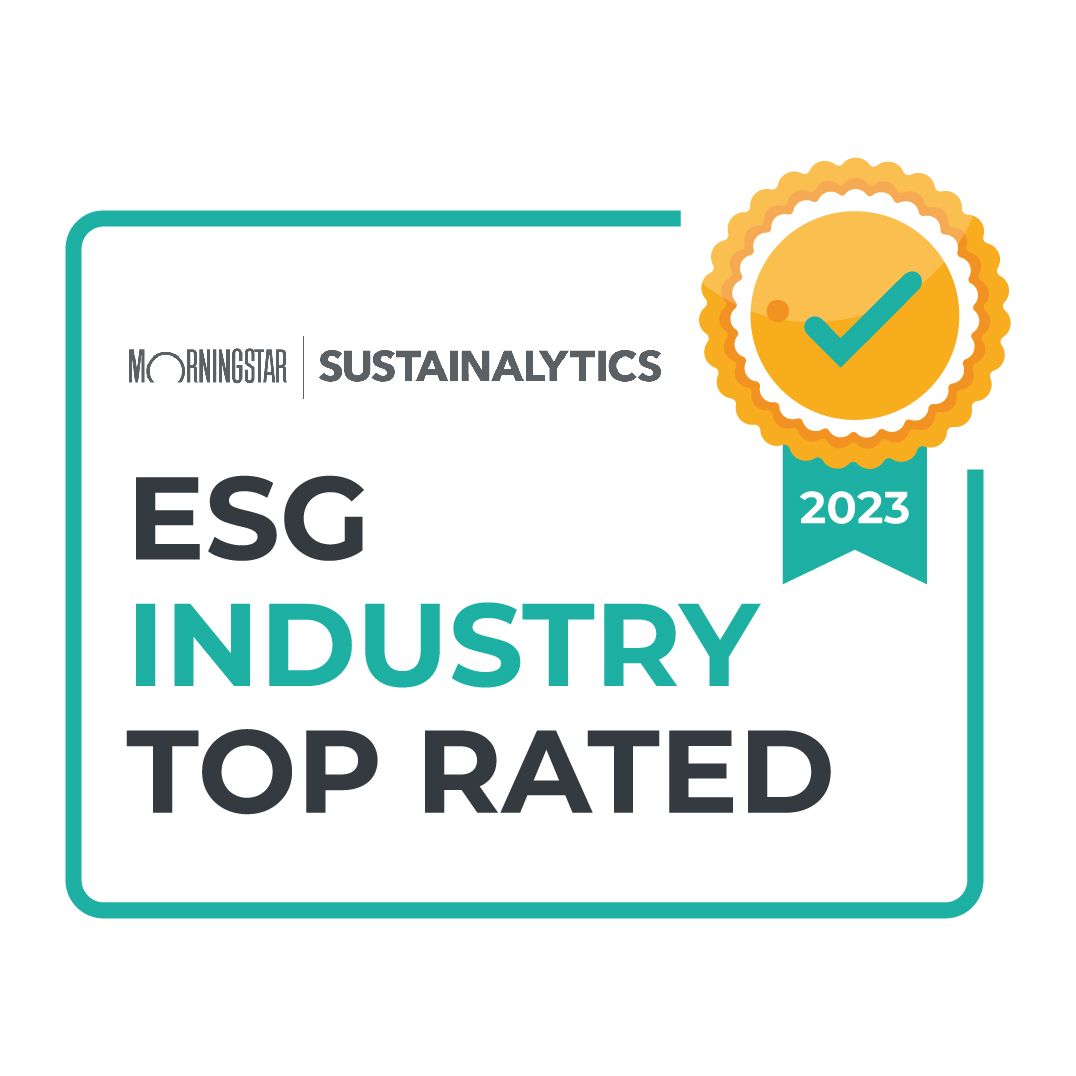
The company launched the SDG Resource Centre in 2017 as a repository for articles, tools, data, news, and events about the SDGs from its businesses and partners including the UN Global Compact and the World Bank. “The catalyst for me was an event we organised on the day the SDGs were adopted in 2015,” adds Dr Balisciano. “We presented research about how ready the world was to adopt them. I was sitting in the audience thinking that across RELX we have products, services and tools that advance the SDGs. Since then, we have made over 1,500 journal articles and book chapters free to access which would otherwise have cost over £3m to make open access.”
It is a mark of how seriously the company takes the platform that the pay packets of CEO Erik Engstrom and CFO Nick Luff are linked to its performance with annual targets to increase content, users, and partners. RELX has also entered a new $3bn credit facility with interest rates linked to three ESG performance targets, including increasing content and users on the SDG Resource Centre.
exploring the
sdg resource centre


The SDG Resource Centre is aimed at customers, investors, employees, partners, NGOs, corporate peers, and the public and is designed to support the UN in implementing the SDGs and broadening awareness and understanding. “RELX is doing amazing work to promote the SDGs and offer resources to other businesses and society in general,” says Aude Coquatrix, General Counsel, Diversity, Equity, and Inclusion Lead at the Foundation for the Global Compact.
“The SDG Resource Centre is open to everyone and is free which is remarkable. It’s wonderful for us to see the level of engagement RELX shows. It is a trailblazer – we need more RELXs!”
SDG Inspiration Day
Visitors to the SDG Resource Centre are greeted with the latest featured content, currently information about RELX’s ninth annual SDG Inspiration Day. The theme this year is Biodiversity and the UN Sustainable Development Goals with speakers including environmentalist Dr Jane Goodall and former UN Secretary General Ban Ki-moon. The free online event aims to explore SDGs 14 (Life Below Water) and 15 (Life on Land) and how they intersect with other SDGs, such as SDG 2 (Zero Hunger), SDG 3 (Good Health) and SDG 13 (Climate Action). Last year’s event focused on SDG 16 (Peace, Justice, and Strong Institutions) with speakers including musician and activist Sir Bob Geldof.
Classifying content to help with SDG related research
Visitors then see an interactive version of the UN’s colourful SDG graphic. Each of the 17 SDGs is represented by a box. When visitors click on a box, they are taken to journal articles, book chapters and scientific reports relating to that SDG. These academic resources are from Elsevier, part of RELX, which publishes over 2,800 digital journals, including The Lancet and Cell, 45,000 e-books and iconic reference works such as Gray’s Anatomy. Clicking on SDG 6 (Clean Water and Sanitation) takes visitors to a list of journal articles, many of which would otherwise be paywalled, including an investigation into whether human pharmaceuticals are poisoning rivers and an extensive literature review about the impacts of microplastics on seas, rivers, and lakes. Users can click and read the full text of articles for free via ScienceDirect.
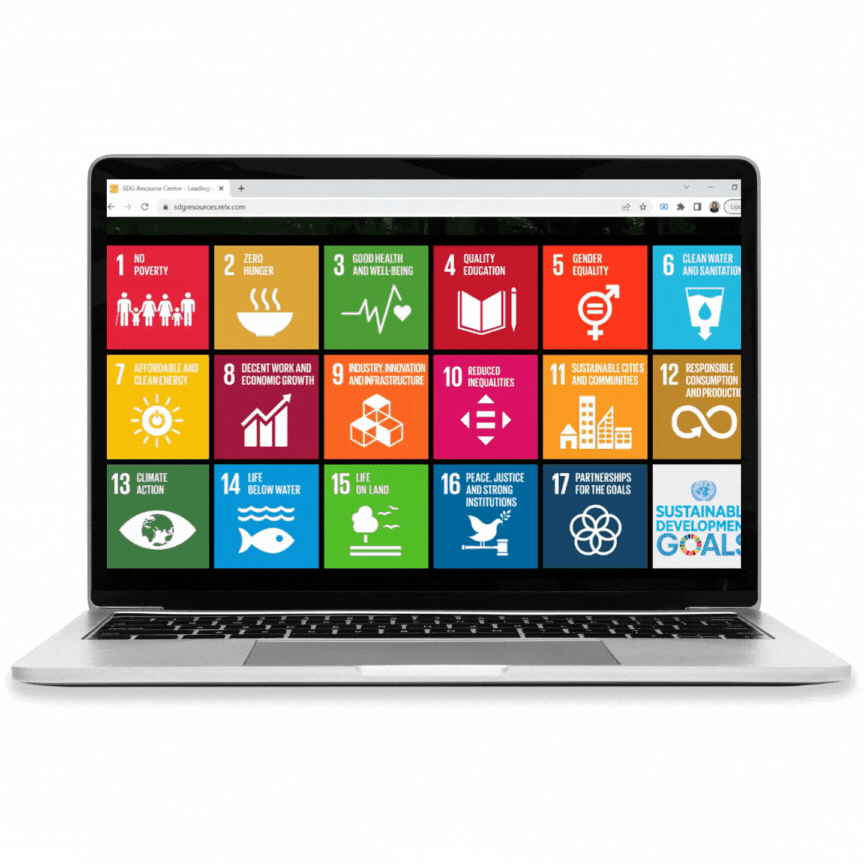
Content does not need to mention the SDGs to be included. “We use some traditional search techniques as well as machine learning to classify research into the right SDG category,” says Olivier Dumon, Chief Product Officer at Elsevier. “So, for instance, we build a bag of words relating to SDG 2 (Zero Hunger). We then create queries with those words and see what articles are retrieved.”
He adds: “This usually gets us to about 80% of relevant articles. We know it is only 80% because we ask experts to map sample articles to the relevant SDGs. Around 20% of articles mapped to SDGs by humans are not mapped by the algorithm. We then train the machine-learning model so it can retrieve the remaining 20%. We publish the search queries as well as the AI algorithms so the research community can provide feedback and help it constantly improve.”
Last year the company increased the number of research articles on the SDG Resource Centre by 24% and added 650 new content items. It now contains over 3,200 journal articles and book chapters as well as 18 special issues featuring curated articles, chapters, and other content on specific topics, including a humanitarian special issue in the wake of the invasion of Ukraine and a climate change special issue ahead of COP27.
“The SDG Resource Centre has really grown by leaps and bounds,” says Ylann Schemm, director of the Elsevier Foundation, which contributes over $1.5m a year to research programmes dedicated to the SDGs. “For me, the platform really came alive when we collaborated on The Power of Data to Advance the SDGs report, producing a set of infographics showing the state of research within each SDG.”
In the same report, Elsevier’s International Centre for the Study of Research used Scopus, Elsevier’s abstract and citation database, and its research performance assessment tool SciVal to assess progress and identify shortcomings in SDG research. The scientists found comprehensive gaps in sex and gender integration across the majority of SDG research areas including the impact of climate change on women. “The SDG Resource Centre emphasizes the power of partnerships and helps to shape interventions,” adds Schemm. “For instance, we’ve just kicked off a partnership on gender and climate action because of these findings. Eight women-led teams are turning research into concrete projects over three years – everything from sustainable food gardens in Guatemala to climate literacy in Nicaragua.”
Meanwhile, researchers use the platform to research their projects. David Ewusi-Mensah, Co-founder at Eco Amet Solutions, from Ghana, is one of 17 young African researchers taking part in the Global Citizen Scholarship Programme run by the Ban Ki-moon Centre for Global Citizens and supported by RELX. He uses the SDG Resource Centre for his research into how African countries – such as Rwanda, Kenya, and Uganda – are tackling the problem of single-use plastic.
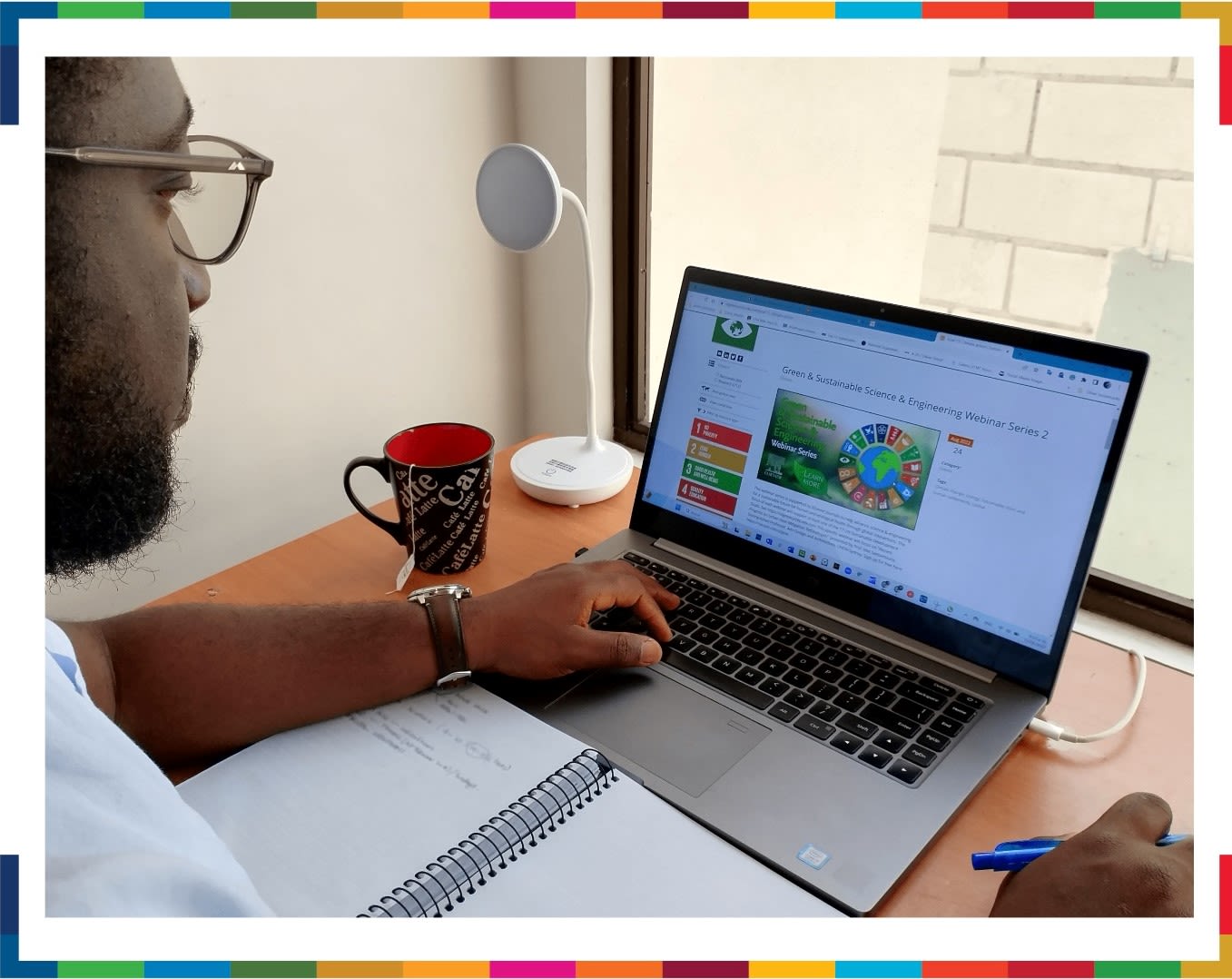
David Ewusi-Mensah using the RELX SDG Resource Centre for his research
For instance, Rwanda has gone further than most countries in outlawing single-use plastic which is now considered contraband, he explains, adding: “After the genocide, the country was ambitious to show the world it was united and could attract investment and tourism. They engaged and educated local stakeholders involving everybody in the process and helping them adapt to life without single-use plastics. They also innovated alternative materials from rice, sugarcane, and coconut. Now people are swollen-headed that their country is one of the cleanest in Africa.”
“The SDG Resource Centre is a good one-stop-shop for my research. Things pop up there you might not find on a search engine because of paywalls and all the sources are there so it is very easy to cite.”

Classifying and tracking SDG global news
Further down the home page of the SDG Resource Centre is the SDG News Tracker powered by LexisNexis Newsdesk, part of RELX. The colourful interactive bar chart shows SDG news from around the world from the past 30 days. Each bar represents a week from the past month with colour blocks indicating the volume of coverage for each SDG. For instance, it shows that SDG 13 (Climate Action) and SDG 5 (Gender Equality) had considerably more coverage than any of the other SDGs in May 2023. Users can click on each colour block and view articles. The tracker searches millions of articles published daily across 77,000 news sources in seven languages (Arabic, Chinese, English, French, Spanish, German and Russian). Users can also search for SDG news by geography using the interactive map.
Newspapers tend not to mention the SDGs on a day-to-day basis perhaps because they are broad catch-all and journalists prefer specific stories that aid sense-making of big issues. However, they do cover many stories relevant to the SDGs. The SDG News Tracker uses keywords to scoop up articles that are SDG-related but make no mention of the SDGs by name.
“We also have a couple of million blogs in there,” says LexisNexis Director of Product Management Zak Gollop. “There will be someone out there talking about the SDGs by name even if some of the mainstream media isn’t.” LexisNexis Newsdesk has also created reports on the news coverage of the SDGs with charts and insights about how media organisations in different countries and regions report on them.
In addition to journal articles from Elsevier and news articles from LexisNexis, the platform hosts other content including The World We Want podcast, videos, webinars, and tools such as the Lexis Nexis Rule of Law Impact Tracker.
evolving the
sdg resource centre

The SDG Resource Centre had over 155,000 unique users by the end of 2022, a 16% increase over the previous year and is constantly expanding and evolving. There are plans to create more original content – particularly film – and to increase automation incorporating AI features, such as article recommenders and search prompts.
There are also plans to add a search feature to the SDG News Tracker. “We already have these pre-canned SDG searches,” says Gollop. “For instance, there is lots of climate-related coverage, but someone might want to explore the intersection of climate change and poverty. With a search capability, they would be able to do that.”
Other innovations in the pipeline include an automatic feed of events from RELX’s global events business RX and data from its abstract and citation database Scopus. This would enable the platform to expand beyond Elsevier’s content – which is about 20 percent of the world’s scientific research – to provide abstracts of journal articles from other publishers, providing an even more complete picture of the SDG research landscape.
There is also considerable excitement about incorporating patent data. RELX recently acquired Aistemos, a firm that uses AI to classify patents. The product will be incorporated into the company’s flagship IP analytics product LexisNexis PatentSight. RELX hopes to use its AI-powered patent analytics to identify SDG-related innovations and their impact.
“Research involves input (people, building, knowledge, equipment and money pouring into research), throughput (scientists creating new knowledge) and output (it usually starts with a journal article published in a scientific journal certifying and disseminating knowledge together with a research dataset, a software contribution...),” says Dumon. “We also want to differentiate between output and outcomes of research. It’s an outcome when the knowledge in an article becomes a patent or clinical guideline. What ultimately matters is the impact of the knowledge that has been created on the life expectancy of cancer patient, for example. The dream for us is to link the whole chain from input to outcomes down to impact (economic, societal...) to provide a full picture of humanity’s progress towards the SDGs.”
Critics of the SDGs say the goals are too broad and ambitious – particularly given the pandemic set back progress. SDG 1, for instance, aims to end poverty by 2030 yet around 120m people were pushed into extreme poverty by COVID-19 – the first rise in global poverty for 20 years.
“The SDGs are broad,” agrees King from his home office in Vermont, “but they enable countries, cities, companies, and individuals to work towards the same goals providing a unifying framework that helps everyone remember they are moving in the same direction, even when they are working on different projects. I believe they remain the best roadmap for humanity.”

Jake King in Honduras
Jake King in Honduras

